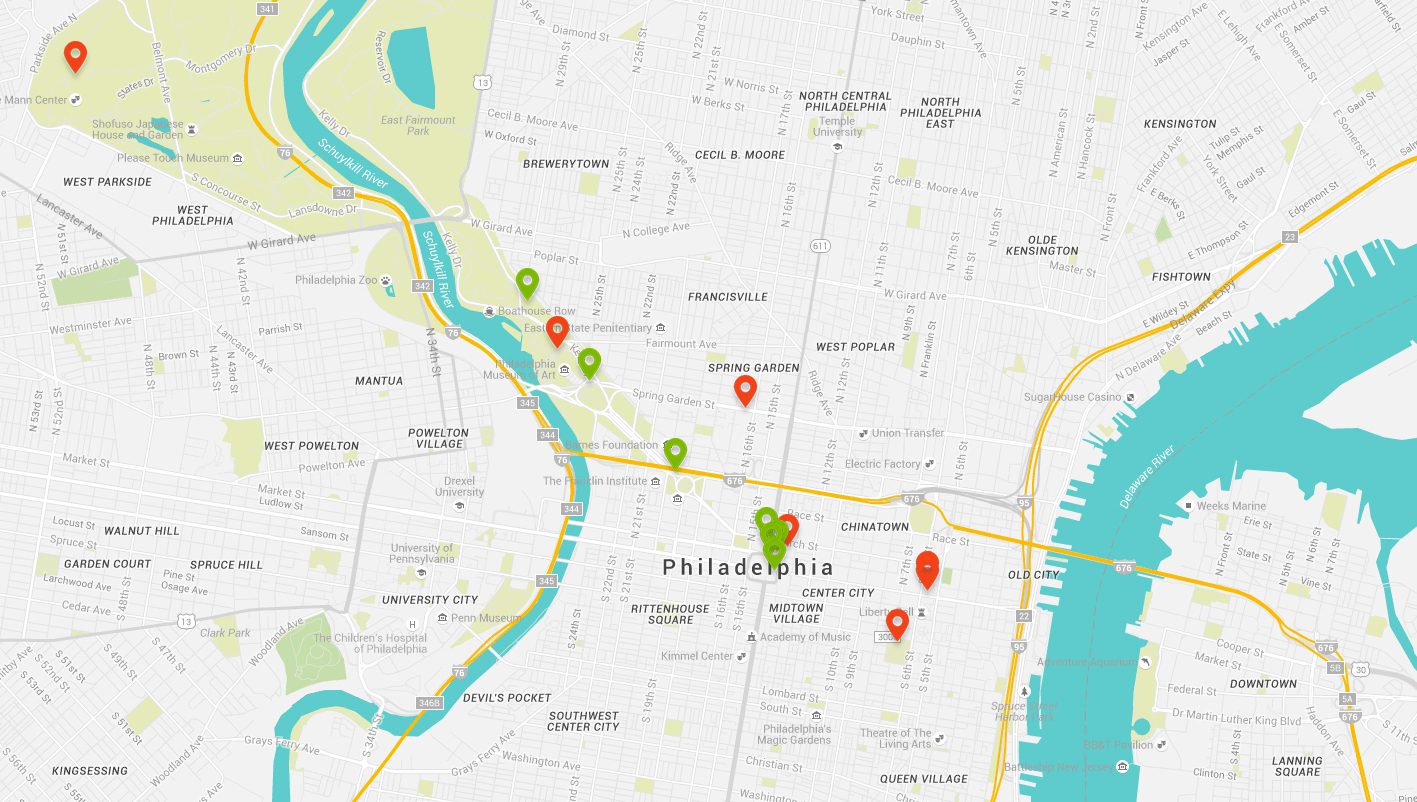Inspired by the 2016 Democratic National Convention (July 25-28), the Association for Public Art has mapped out a selection of political public art in Philadelphia. Below are sculptures and monuments in the city relating to American politics and government, including memorialized leaders from George Washington to Chief Justice John Marshall.
Click the map below to view the artworks as an interactive map. Happy exploring!
>> Discover more artworks and themes or take a tour
1. George Washington (1790, cast 1922), Jean Antoine Houdon
Washington Square, Walnut Street between 6th and 7th Streets
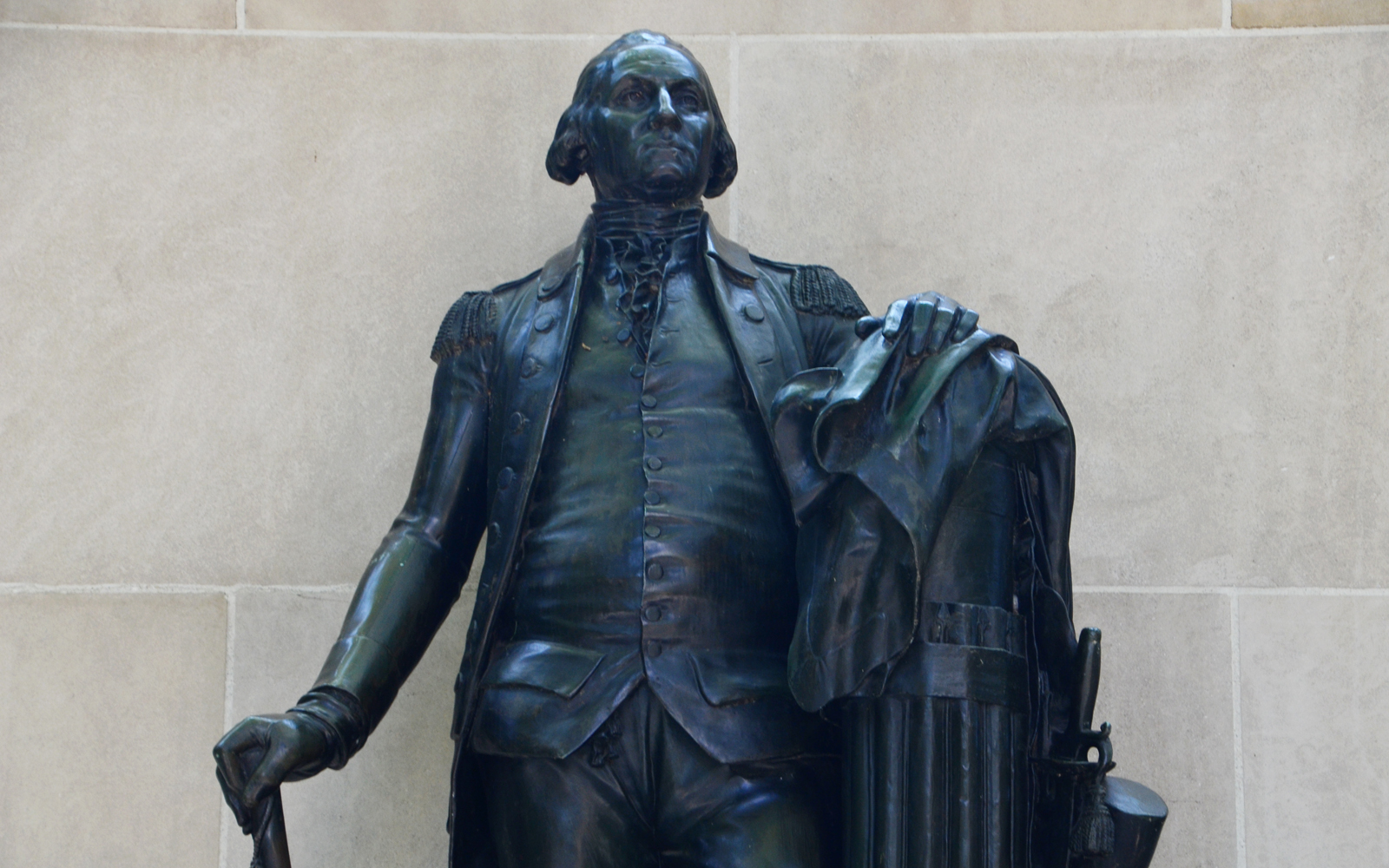
Jean Antoine Houdon came to America with Benjamin Franklin in 1785 to model a full-figure sculpture of George Washington. Houdon, then considered one of the finest sculptors in Europe, had recently completed a bust of Franklin. The figure of Washington was to be the first monumental sculptural effort of the new nation, of “finest marble and best workmanship.” This statue is one of three castings in existence. Learn more
2. Indelible (2003), Alison Sky
Independence Visitor Center, south side exterior, 6th and Market Streets
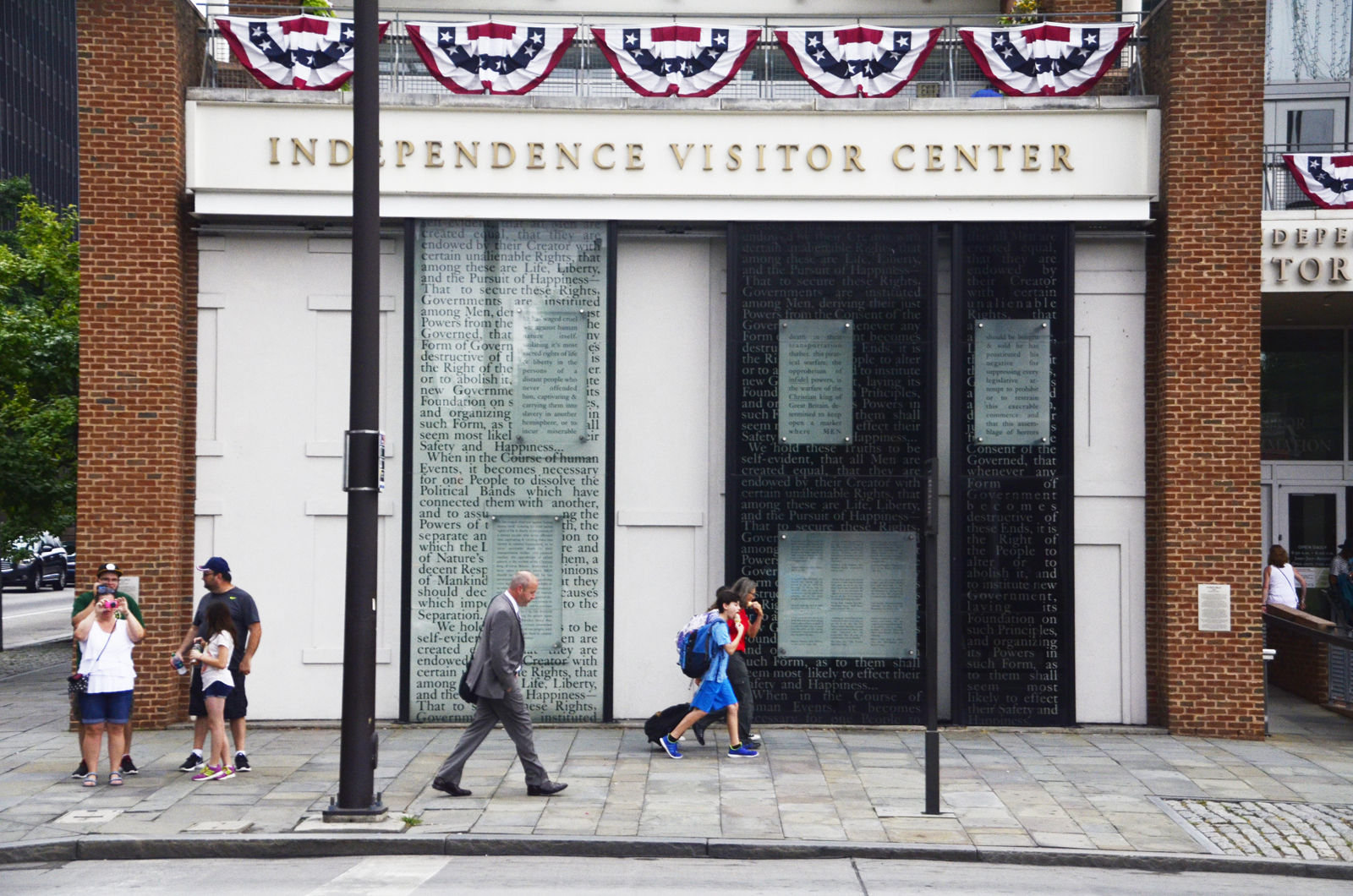
Indelible is a narrative work intended to create awareness about American history that has gone undisclosed. The glass panels contain quotes from the Declaration of Independence, as well as text about the condemnation of slavery that was omitted from the original draft. The text about slavery appears blurry, as if erased, but is revealed as the viewer moves. Learn more
3. The President’s House: Freedom and Slavery in the Making of a New Nation (2010), Emanuel Kelly, Kelly/Maiello Architects, Lorene Cary, and Louis Massiah
6th and Market Streets
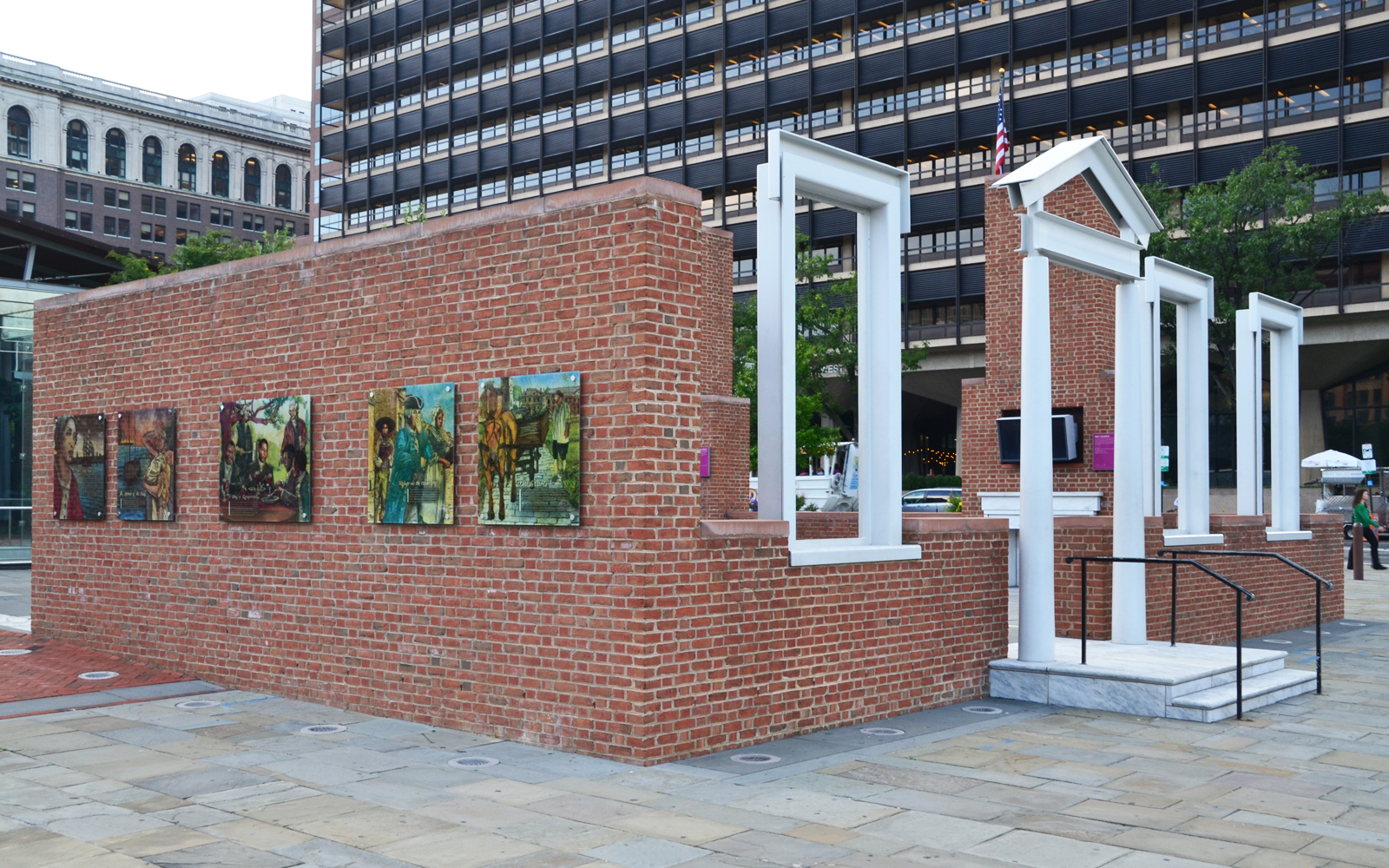
This open-air installation was designed to give visitors a sense of the house where the first two presidents of the United States served their terms of office. The commemorative site pays homage to nine documented enslaved persons of African descent who were part of the Washington household, addressing the topic of slavery in the early history of the United States. Learn more
4. William Penn (1886-1892), Alexander Milne Calder
City Hall Tower, Broad and Market Streets
Over thirty-six feet tall and weighing more than 53,000 pounds, Alexander Milne Calder’s William Penn atop City Hall is one of Philadelphia’s most prominent landmarks. The statue remained a dominant point in Center City’s skyline for years because of a “gentlemen’s agreement” that no skyscraper would be built higher than the brim of Penn’s hat. Learn more
5. Philada Book of Just Hours (1995), Phillips Simkin
Philadelphia Criminal Justice Center, Juniper and Filbert Streets (southwest entrance)
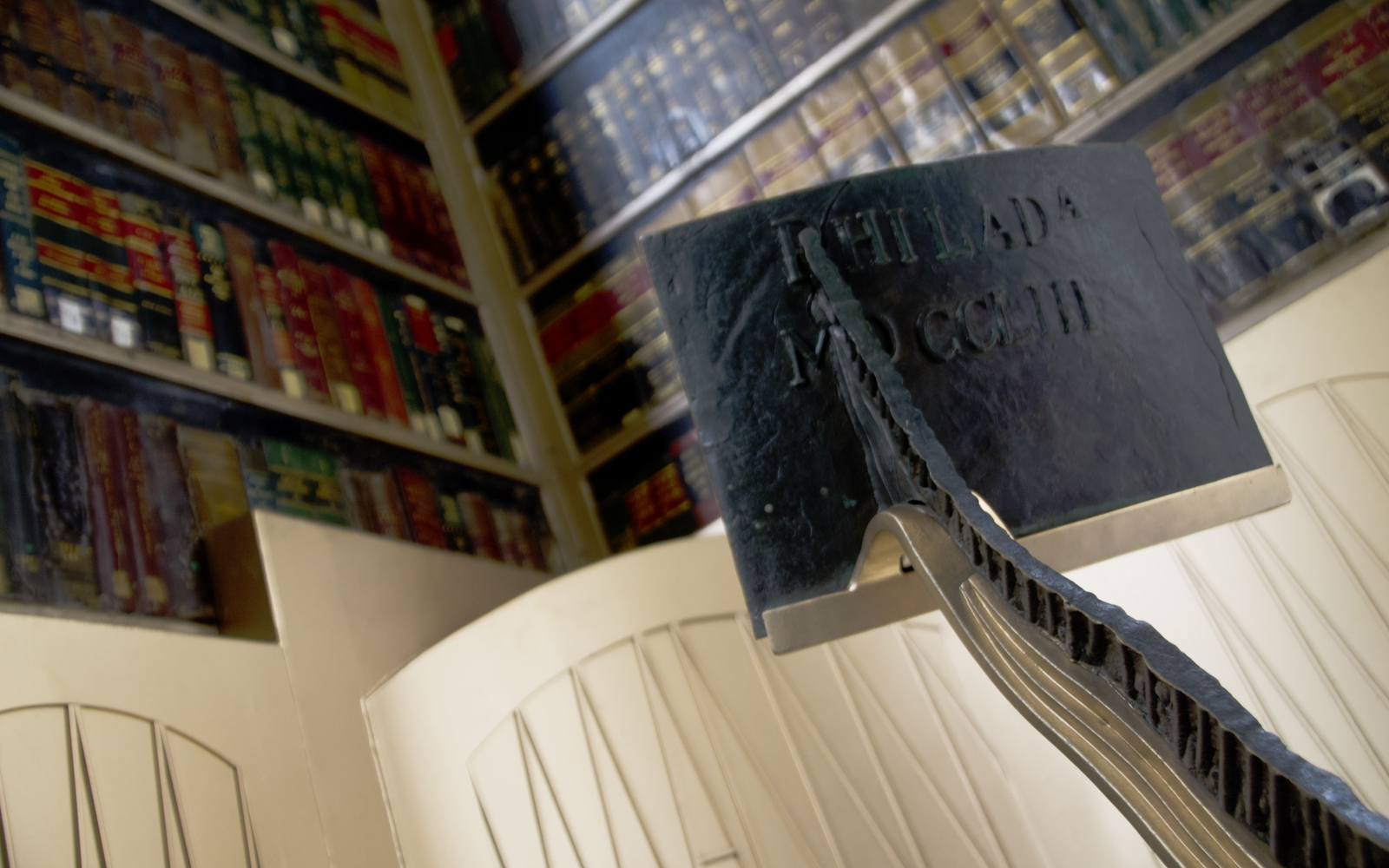
This multi-media law library at the Philadelphia Criminal Justice Center is constructed of metal, bronze, and actual law books collected from local area libraries. There are three metal chairs, positioned to represent the affirmative, negative, and judge’s point of view. The artwork was intended to serve as a symbolic or literal forum for discussions and debates on issues related to the American Justice system. Learn more
6. William McKinley (1908), Charles Albert Lopez & Isidore Konti
City Hall, South Plaza, Broad and Market Streets
Following the assassination of President William McKinley, the 25th President of the United States, the Philadelphia Inquirer initiated a public subscription to erect a proper memorial. McKinley, who was known for his tariff and currency policies, is depicted in a characteristic pose in the midst of delivering a speech. Below him sits a symbolic figure representing wisdom instructing a youth. Learn more
7. Government of the People (1976), Jacques Lipchitz
Municipal Services Building Plaza, Broad Street and John F. Kennedy Boulevard
Government of the People appears to be an inverted pyramid of human arms, legs, and torsos, but upon further study, the figures begin to emerge more clearly. A symbol of democracy, the sculpture suggests continual struggle, mutual support and dedication, and eventual triumph. Ironically, it seemed that the struggles in Philadelphia’s own government of the people might prevent the work’s completion. Learn more
8. John Christian Bullitt (1907), John J. Boyle
City Hall, North Plaza, Broad Street and John F. Kennedy Boulevard
An attorney and civic leader, John Christian Bullitt drafted the “Bullitt Bill” of 1885, a government-reform measure that became Philadelphia’s City Charter two years later. Bullitt also erected the city’s first modern office building, which was eventually taken down to make way for Independence National Historical Park. Learn more
9. All Wars Memorial to Colored Soldiers and Sailors (1934), J. Otto Schweizer
Aviator Park, Benjamin Franklin Parkway at 20th Street
The Honorable Samuel Beecher Hart, a Pennsylvania legislator and captain of the Gray Invincibles, proposed a memorial to the state’s African American military men who had served the United States in wartime. Sixty years after its installation in a remote area of Fairmount Park, the city relocated the memorial to a much more visible site on the Parkway. Learn more
10. Freedom Ring (1994), Houston Conwill
Community College of Philadelphia Courtyard, 18th and Spring Garden Streets
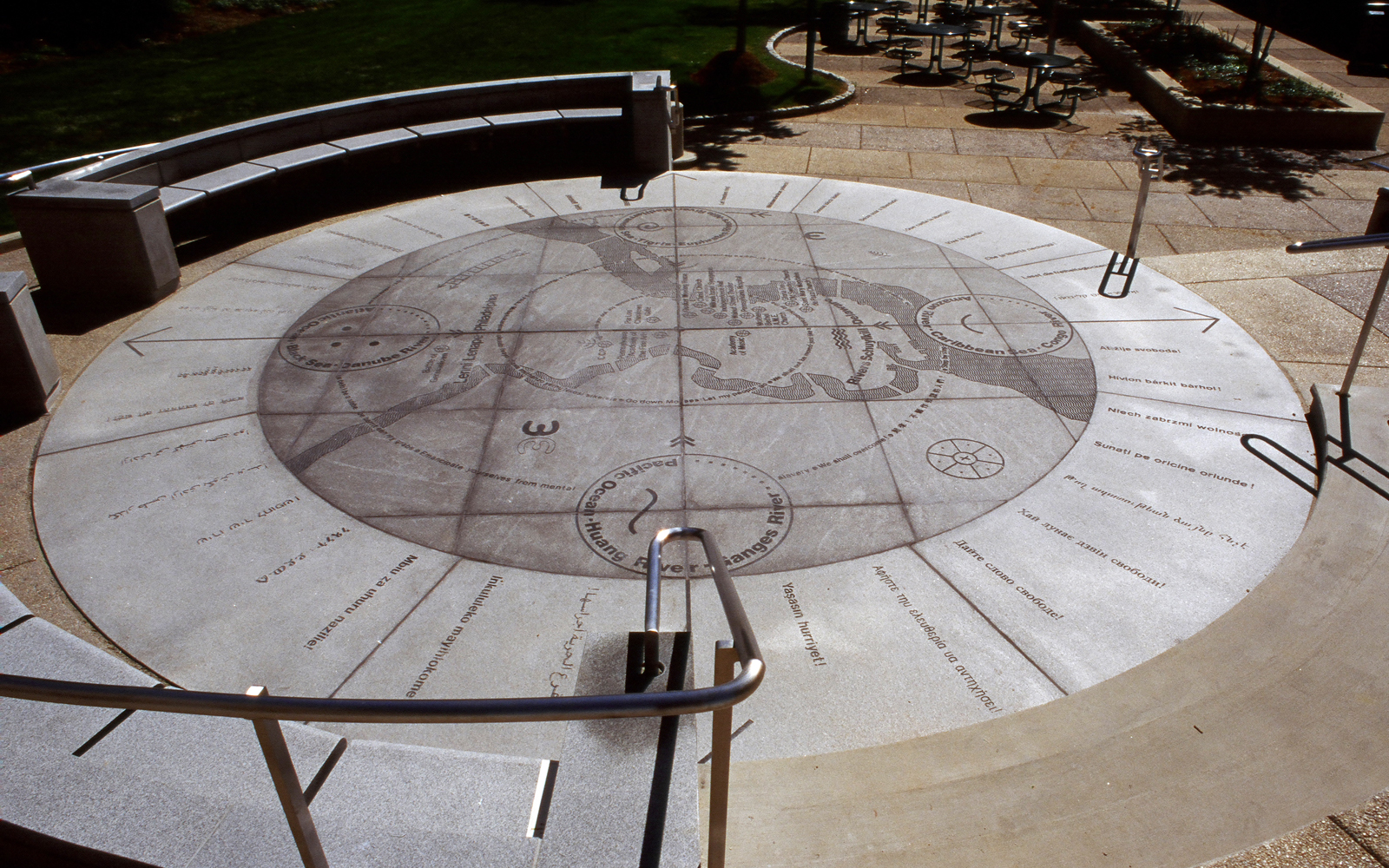
Freedom Ring is a “cosmogram” at the Community College of Philadelphia that celebrates the theme of freedom. The map at the center of the artwork marks the 14 historical sites in Philadelphia where people gathered in search of freedom. The piece was fabricated from over five tons of Pennsylvania black and midnight gray granite, with hundreds of sandblasted letters. Learn more
11. Washington Monument (1897), Rudolf Siemering
Benjamin Franklin Parkway at Eakins Oval (in front of the Philadelphia Museum of Art)
On Independence Day in 1810, the Society of the Cincinnati of Pennsylvania resolved to create a memorial to General George Washington, who had served as president of the organization from its founding until his death in 1799. Located in front of the Philadelphia Museum of Art, the monument is constructed in three zones or levels, each representing a different concept. Learn more
12. Chief Justice John Marshall (1931), William Wetmore Story
Philadelphia Museum of Art, West Entrance
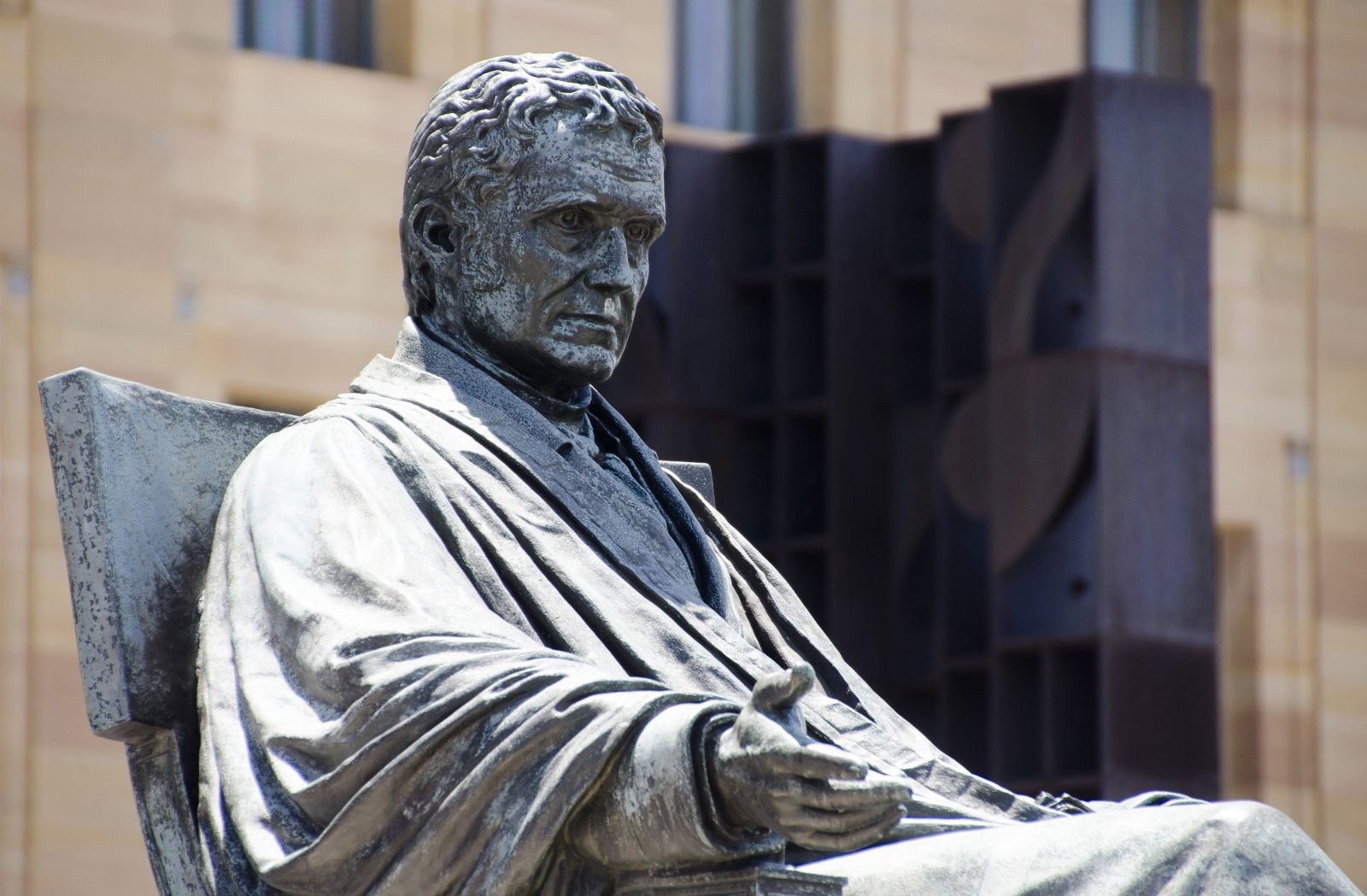
This figure of Chief Justice John Marshall was created by William Wetmore Story, an expatriate American sculptor and the son of an Associate Justice of the Supreme Court. In the 1920s, James M. Beck, Vice President of the Fairmount Park Art Association (now the Association for Public Art) and a member of Congress, commissioned a plaster replica from which a bronze could be made for Philadelphia. Learn more
13. Abraham Lincoln (1871), Randolph Rogers
Kelly and Sedgely Drives
Philadelphia was one of the first cities in the nation to erect a monument to Lincoln following his assassination in 1865. Seated, with quill in hand, Lincoln is shown just having signed the Emancipation Proclamation. The artist rendered Lincoln in the naturalistic style that was prevalent in mid-nineteenth-century portraits. Learn more
14. James A. Garfield Monument (1895), Augustus Saint-Gaudens
Kelly Drive, south of Girard Avenue Bridge
Following the assassination of James A. Garfield, the 20th President of the United States, the Fairmount Park Art Association (now the Association for Public Art) established a fund to create a fitting memorial. The memorial was a challenge, as Garfield had not been a colorful president during his short term, nor outstanding as a soldier, congressman, or teacher. Learn more
15. Law, Prosperity, and Power (1880), Daniel Chester French
South George’s Hill Drive, north of Mann Music Center, West Fairmount Park
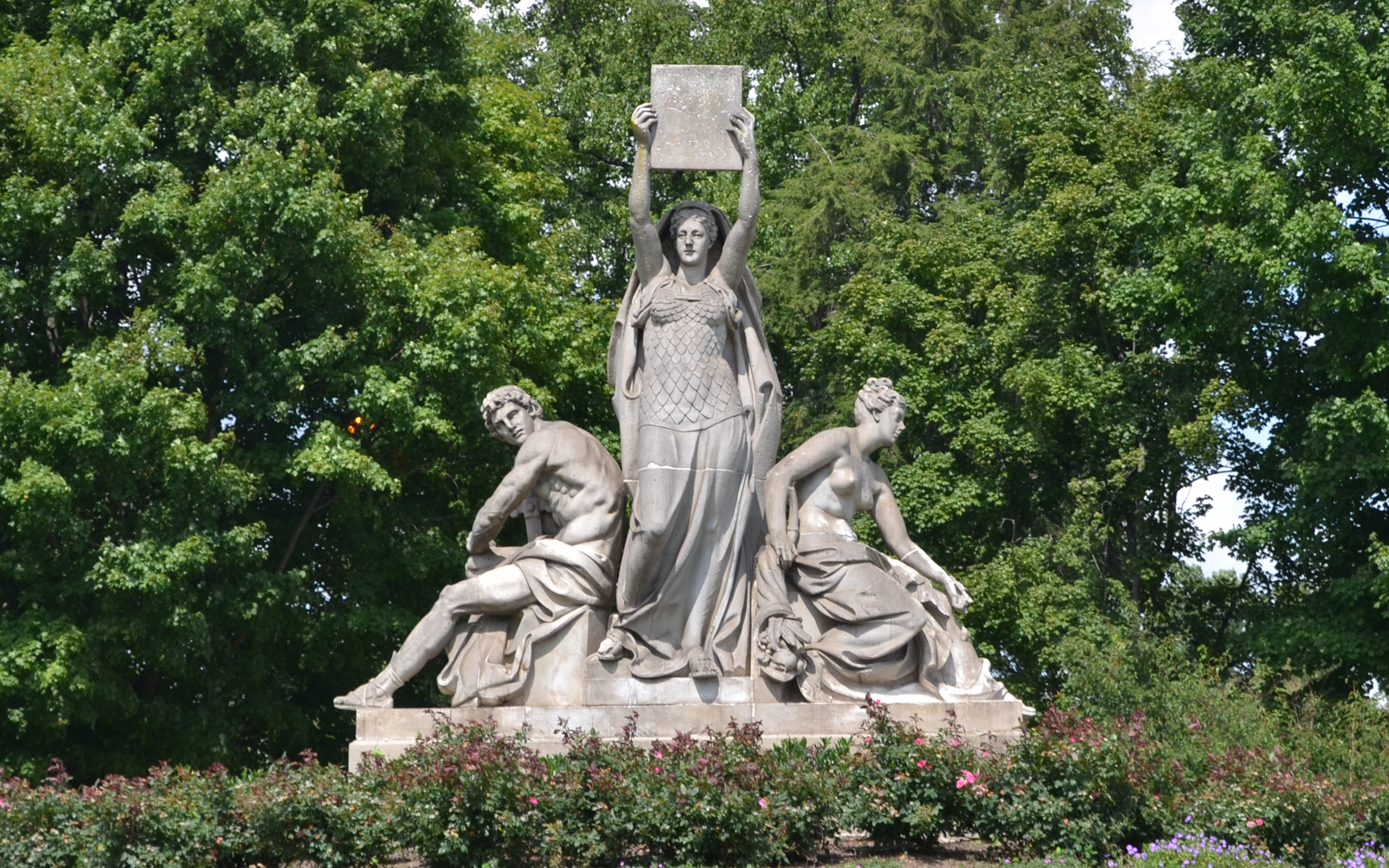
Among Daniel Chester French’s early commissions were lofty allegorical works that described the functions of federal buildings. Law, Prosperity, and Power, commissioned for the U.S. Post Office and Federal Building in Philadelphia, idealized the government in a lyrical form and material (marble). Daniel Chester French also sculpted the statue of Abraham Lincoln in the Lincoln Memorial in Washington, D.C. Learn more
